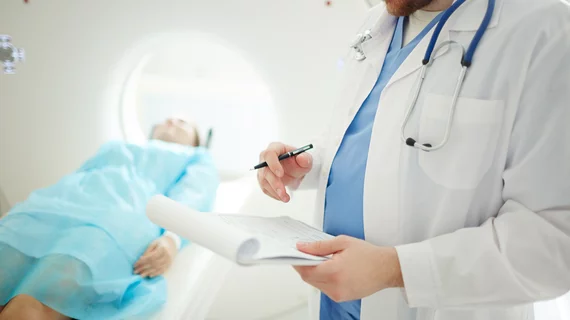COVID-19 disruptions lead to ‘substantial’ reductions in new cancer diagnosed via CT, other methods
COVID-19 disruptions have led to “substantial” reductions in cancer cases diagnosed via CT and other methods, according to new research published Monday.
In April 2020, lung cancer encounters dropped by 10% compared to pre-pandemic levels, with even larger drops for cases affecting the prostate, bladder and colorectum. Chest CT scans plummeted by 64% and prostate biopsies by 80% compared to 2018-2019 averages, with sizable drops in delivery of cystoscopies and colonoscopies, experts wrote Dec. 6 in Cancer.
The findings are derived from data covering more than 9 million U.S. veterans, treated across 1,244 Veterans Affairs medical facilities.
“The disruption in nonemergency healthcare during the peak of the pandemic was intentional and necessary,” study author Brajesh Lal, MD, with the University of Maryland’s Department of Surgery, said in a statement. “As we enter the recovery phase, we hope that our work will help physicians, hospitals and healthcare organizations anticipate the extent to which they have fallen behind in their efforts to diagnose new cancers.”
All told, there were roughly 4.1 million cancer-related encounters in the VA during all of 2018-2020, with 3.9 million screening procedures and nearly 252,000 cancer diagnoses. That included more than 51,000 patients diagnosed with lung cancer via computed tomography. Cancer-related encounters rebounded back to historic averages by summer 2020, the authors noted.
However, procedures continued to remain below baseline throughout 2020. Colonoscopy saw the largest decrease, with an estimated deficit of nearly 25,000 underperformed procedures in April and almost 6,000 by December. Lal and co-authors also denoted a deficit in procedures, without a rebound sufficient to make up for it amid moratoriums, totaling nearly 63,000 chest CT scans (12%). Screening chest computed tomography had a “similar initial deficit,” the analysis found, but rebounded leading to no annual deficit for 2020.
“Perceived risks of invasive versus noninvasive procedures may explain why CT scans recovered to near baseline levels by the end of 2020 and accumulated smaller backlogs than colonoscopies,” the authors speculated. “Even if the risks of COVID-19 are minimized through vaccination and herd immunity, patients who have fallen out of the routine of their typical care may encounter barriers to re-entry that are difficult to overcome. For these reasons, health systems will need to identify areas where patients are not following up on their routine cancer care or screening and find ways to reassure and reengage them.”

